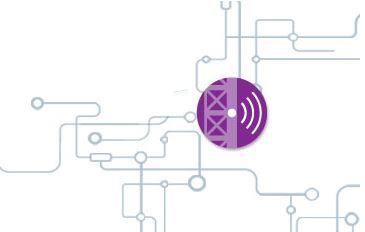With the advent of cloud computing and the Internet-of-things, the age of information we inhabit is steadily expanding in every direction. As a result, wireless service providers are challenged with creating faster and more robust networks. To this end, analog integration plays a key role due to its high dynamic range, exceptional sensitivity, and conservative power consumption.

Combining high-speed data converters and high-performing RF ICs yields optimal spectral efficiency, decreased BOM cost, minimal board usage, and low-power.
What are the bottlenecks?
Passive antennas are being steadily replaced with active antenna arrays (AAAs) in order to drastically increase the amount of radio transceivers needed to accommodate increasing channel density. This challenges system designers to find a way to retain dynamic range, receive sensitivity and power efficiency while fulfilling performance requirements.
A complete network must be heterogeneous to maximize wireless coverage, combining macrocell usage with base stations such as picocells and femtocells. Picocells are typically small cellular base stations that are used to extend coverage into indoor areas that are unable to catch an outdoor signal or to increase network capacity in areas of dense usage. Similarly, femtocells may also be used to extend indoor coverage but are typically used to amplify signal reception along the cell’s edge. Nonetheless, both components play a significant role in 21st century connectivity, thus pressuring service providers to institute more and more units. Because providers are hypersensitive to unit price, femto/pico cell designers must strive to keep down the bill-of-material cost.
Analog integration’s role
As base stations multiply throughout congested and peripheral areas, form factor becomes a crucial design element. Femtocell transceivers such Maxim’s MAX2550 and MAX2553 eliminate external amplifiers and baluns and incorporate transceiver functions onto a single chip to reduce solution size by 43%. These transceivers are designed to support small-cell base stations needing multimode support such as 3G and LTE, and the optimized form factor allows the use of an active antenna array to further improve LTE transmission and reduce building-of-material cost minimize size.
Similarly, macrocell base stations benefit from analog integration by consolidating multiple analog signal conversion functions within a single radio frequency digital-to-analog converter. The MAX5879 RF DAC embraces this position through its 14-bit 2.3-Gsample/s supercharged nature, which allows the transferring of critical analog functions directly to the digital realm to altogether abolish all analog upconversion errors. It then becomes possible to develop a fully digital RF transmitter on a common hardware platform.
Explore Maxim Integrated for a closer look into the future of analog integration.
Advertisement
Learn more about Maxim Integrated





